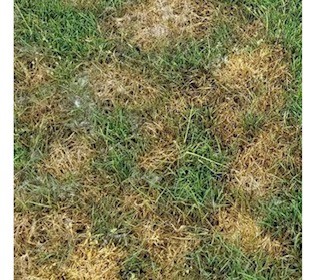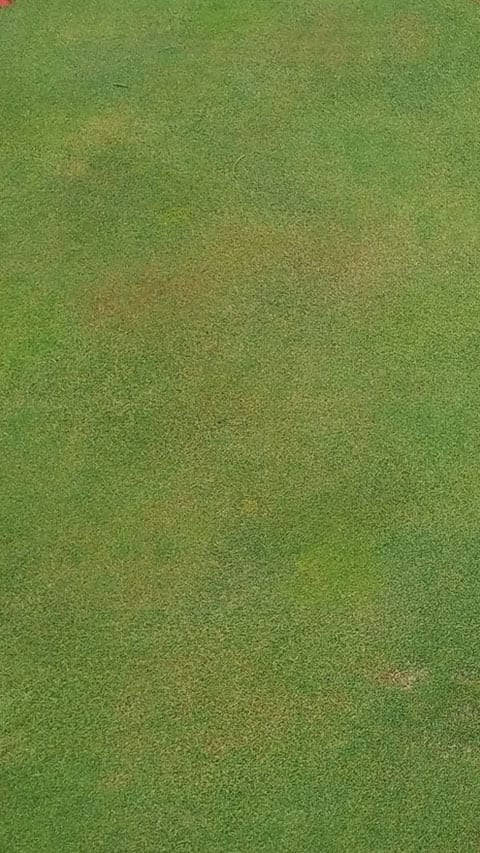Segway Turf Fungicide.
Segway Fungicide contains the new active Cyazofamid. This is a selective Oomycete fungicide developed by ISK Biotech, and in FRAC Group 21.
Cyazofamid is an ideal rotation option in any pythium resistance management program. We think that any turf agronomist worth their salt will admit that this is the go to option if there is a problem with pythium.
Table of Pythium Fungicdes vs Segway.
Product | Active | Prevention | Curative | FRAC Group | Rate L/Ha | Cost/Ha $ | Days of Control | PRD (Pythium Root Dysfunction) | Blight | Root Rot | Damping Off |
Segway | Cyazofamid | 21 | 1 | 950 | 21 to 28 | ||||||
Grenadier | Fosetyl-Aluminium | 33 | 12.5 Kg | 600 | 21 to 28 | ||||||
Shrapnel | Propamocarb | 28 | 4.5 to 6.5 | 610 to 880 | 10 to 14 | ||||||
Solitaire | Metalaxyl-M | 4 | 1.75 to 3.5 | 335 to 670 | 14 to 21 | ||||||
Pistol | Thiram | M3 | 20 | 400 | 7 to 10 | ||||||
Terrazole | Etridiazole | 14 | 10 to 25 Kg | 1,100 to 2,200 | 10 to 14 |
Being a Qil (Quinone inside Inhibitor), Segway Fungicide controls Pythium and attacks oomycetes fungi by respiratory inhibition at Complex III in the mitochondria.
This occurs at all stages of fungal development, and results in the inability for the fungal infection to develop spores or mycelium. This prevents the pathogen from spreading or intensifying, and ultimately destroys any established Pythium spp. infections.
Segway Fungicide has some local systemic activity within the plant, and works largely on contact. This means it works best as a protectant fungicide.
The rain-fastness characteristics of the active cyazofamid are due to its affinity with the waxy cuticle of the plant. This means its protectant activity is very reliable for a 21-28-day period.
Segway inhibits all stages of the oomycete’s development, and prevents and cures Pythium.
That’s the reason we recommend Segway fungicide for Pythium management for out of season events, and especially if the surface is going to be covered.
Segway Fungicide Label
Fungicide Properties.
- Segway Fungicide is long lasting. You get 14 to 28 days of pythium control from one application.
- It is rainfast. Once you apply it, it locks onto waxy leaf surfaces. This maximises its performance as a protectant fungicide.
- Cyazofamid has low water solubility, and spreads well on the leaf surface.
- Segway Fungicide readily penetrates the plant, and has translaminar mobility for excellent coverage.
Segway Fungicide Resistance Management.
Segway is a new Pythium fungicide with a new mode of action for the Australian turf industry. The active, cyazofamid is an ideal resistance management option to rotate with ProForce Shrapnel and ProForce Solitaire.
- To prevent the onset of resistance, rotate Segway Fungicide with products that have different modes of action.
- Follow the label directions in relation to rates, timing, and other specific instructions related to resistance management.
- Use Segway as part of a broad disease management program that includes other strategies like cultural practices and the use of resistant turf cultivars.
- Segway is not cross-resistant with other Pythium fungicides classes.
- You can apply Segway Fungicide two times consecutively. Up to three times per year at the high label rate, and six times per year at the low rate.
Diseases Controlled by Segway Fungicide.
Segway controls all Pythium sp including:
- Pythium root dysfunction.
- Damping-off.
- Pythium root rot.
- Pythium blight.
Segway Trials for Pythium.
Trials into the effect of irrigation on Segway Fungicide show that when you wash it in, you get five times the residue of cyazofamid in the 0 to 25 mm soil depth. This is in comparison to if you delay irrigation for six hours after treatment.
When you apply Segway Fungicide, its active cyazofamid remains in the treatment zone. This optimises its performance as a protectant fungicide. Studies demonstrate that there is no negative impact on the its performance after 20 mm of simulated rain over a 2 hour period.
Segway Fungicide for Pythium Blight.

Pythium blight after treatment with Cyazofamid
Prevention of Pythium Blight.
- A trial at the University of wisconsin in 2021 on perennial ryegrass. 1 day before covering with Evergreen covers, Segway Fungicide is the only treatment that gives long lasting turf quality over the trial duration.
Tips for Getting the Best from Segway vs Pythium Blight.
- As Pythium Blight is a foliar disease water volume is important. You dont need to wash Segway Fungicide into the rootzone.
- Pythium Blight tends to be a problem in couch in cool wet weather in the Spring or Autumn.
- Treat every 14 to 28 days.
Pythium blight control | |||
Treatment | Rate L/Ha | Number of trials | Average % control of pythium blight |
Segway | 2.8 | 18 | 81.9 |
Banol | 6.4 | 8 | 56.8 |
Banol | 9.5 | 3 | 67.5 |
Insignia | 2.5 | 13 | 70.2 |
Subdue Maxx | 3.2 | 8 | 79.7 |
Aliette | 12.7 | 2 | 62.4 |
Signature | 12.7 | 6 | 47.2 |
Pythium Root Rot (PRR).
There two different pythium root rot diseases caused by two different Pythium sp. On creeping bentgrass, root rot is called Pythium root dysfunction (PRD), and Pythium volutum causes this.
However, on Poa annua, this disease is called Pythium root rot and the cause of this are several Pythium species. The Pythium sp that damage turf. roots are different from Pythium aphanidermatum, which causes Pythium blight, a foliar disease.
As Oomycetes, these are referred to as water moulds, and they tend to be a problem in periods of high rainfall in the Spring and Summer.
The best treatment for Pythium root dysfunction is Segway Fungicide. You should water this in after use to move it down into the upper root zone and crown area.
For Pythium root rot, there is not as much information on which treatments work the best. However, there are reports of Segway, Subdue, Banol, and Terrazole all working well.
Tips for Getting the Best Results vs Pythium Root Rot and Dysfunction.
To get the best from Segway Fungicide when you target Pythium Root Rot or Pythium Root Dysfunction.
PRR.
- A disease of bentgrass and Poa.
- When you use Segway Fungicide as a preventative for Pythium Root Rot apply when soil temps at 50 mm reach 16-18°C.
- Immediately water in with 3 mm water
Root Dysfunction.
- A disease of bentgrass.
- Begin treatment in the Spring and Autumn when soil temps at 50mm 10-24°C
- Immediately water Segway Fungicide into the rootzone with 3 mm water
Pythium Root Dysfunction (Pythium volutum and pythium sp).
Preventative.
- Segway Fungicide (cyazofamid) gives preventative control of Pythium root dysfunction.
- Applications in Autumn and Spring of Pyraclostrobin, Azoxystrobin, and cyazofamid suppress Pythium Root Dysfunction in the Summer. Pyraclostrobin is one of the actives present in Lexicon Intrinsic.
Segway Fungicide for Pythium Root Rot.
Pythium Root Rot favours periods of wet weather and symptoms appear as irregular patterns of orange and yellow hues.
Prevention.
- This disease is worse when there is excess thatch or poor drainage. The key to manage it is to carry out regular cultural practices such as aerification, vertical mowing, and topdressing.
- You need to time any preventative Segway Fungicide applications. If you’re going to have several days of rain then it’s a good time to think about spraying.
- Trials have shown that you get the best preventative control when you apply Segway (cyazofamid) before the soil temperature reaches 24℃.
Curative Control.
- Segway Fungicide (Cyazofamid) performs well as a curative application.
- Applications at low rates over 14 to 21 day intervals are as effective as high rates.




